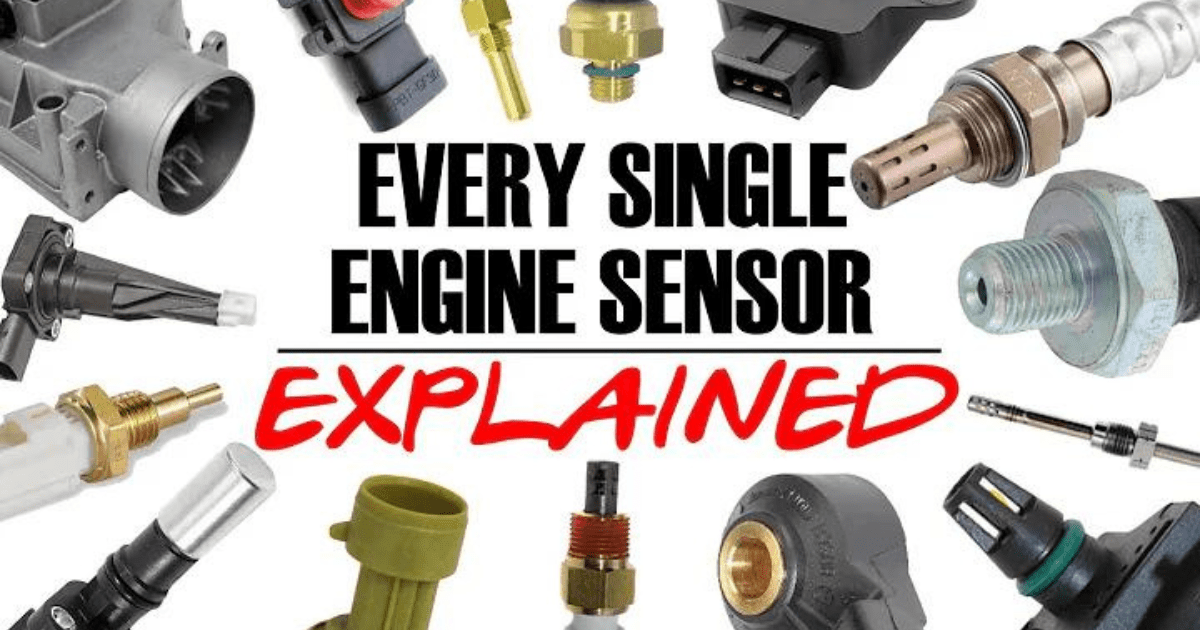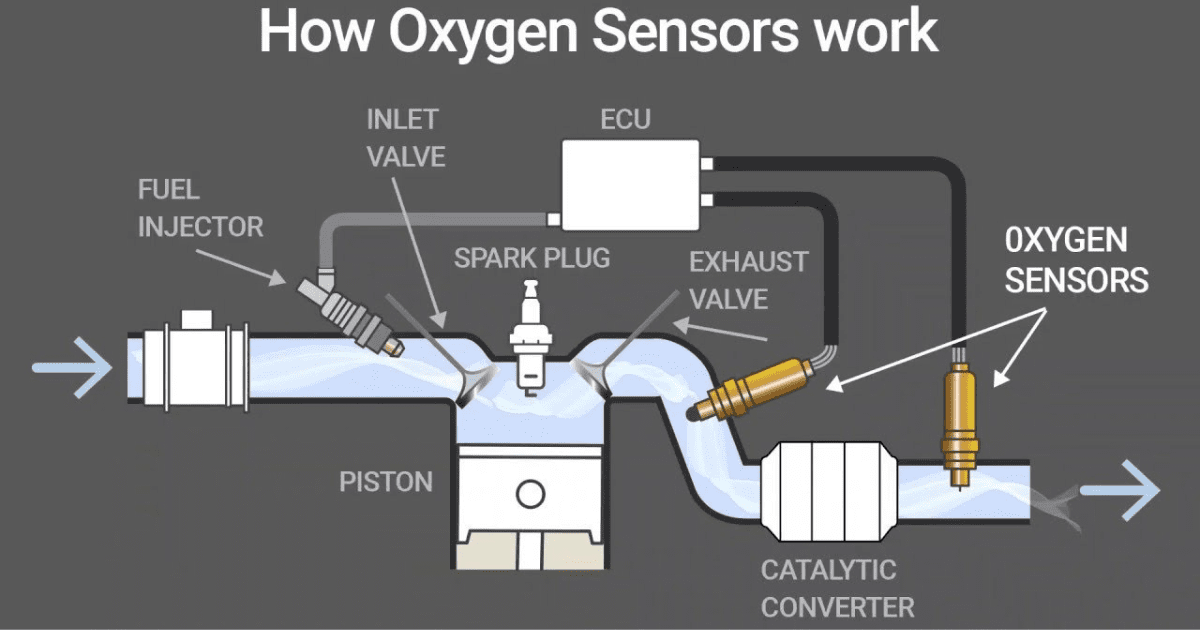Learn about the uses and symptoms of important engine sensors. Learn to spot problems early to make sure they work well and avoid costly fixes. Learn as much as you can about your car.
In the complex environment of a modern car, engine sensors are very important for keeping an eye on many factors and making sure the car runs at its best. These sensors are like the eyes and ears of your car’s engine. They pick up on changes from how it should be working and send important information to the computer systems inside. We shed light on how these 10 engine sensors help find problems before they get worse and cost a lot to fix by explaining what they do.
Mass Airflow Sensor (MAF):
The MAF sensor checks how much air is going into the engine.

The engine control unit (ECU) uses this information to change the fuel flow so that the best air-to-fuel ratio is reached. The following signs show that the MAF sensor isn’t working right:
- Less power and fuel economy.
- Idling or stopping too quickly.
- When accelerating, the engine hesitates.
- The Check Engine Light (CEL) came on.
- Automatic gears that don’t shift correctly.
Oxygen Sensor (O2 Sensor):
The O2 sensor checks how much oxygen is in the exhaust fumes.

By sending input to the ECU, it makes sure that the right fuel mixture is used. This is what a broken O2 monitor can do:
- Less efficient use of fuel.
- Unstable or changing idle state.
- Added more pollution.
- Engine output and acceleration are not good.
- Always showing the CEL with the O2 sensor code.
Throttle Position Sensor (TPS):
The TPS keeps track of where the throttle plate is, which tells it how much air to let into the engine.
This information helps control how fast and how well the engine responds. If the TPS is broken, it could lead to:
- Steady or jerky throttle reaction.
- Slow movement or throttle input that is late.
- Stalls all of a sudden when the throttle is let go.
- Not always the same idle speed.
- Automatic gears that won’t shift.
Coolant Temperature Sensor:
The coolant temperature monitor helps the ECU change the timing of the spark plugs and the amount of fuel going into the engine.
If the monitor fails, giving wrong temperature readings can cause:
- The engine is either too hot or too cold.
- Changing numbers on the temperature gauge.
- Not very good at using fuel.
- A misfire or rough running in the engine.
- Too much heat or a leak in the coolant.
Crankshaft Position Sensor:
The crankshaft position sensor measures how fast the crankshaft is turning and where it is in the engine.
This information is very important for fuel injection and setting the spark. A monitor that doesn’t work right can lead to:
- The engine misfires or acts strangely.
- Having trouble starting the car.
- Getting stuck during process.
- Less power from the engine.
- CEL shows that the engine position is wrong.
Camshaft Position Sensor:
The camshaft position sensor, like the crankshaft sensor, keeps track of where and how the camshaft is moving. It keeps the camshaft and crankshaft in sync so that the engine works at its best. If the camshaft sensor is broken, it can cause:
- Idling or stopping too quickly.
- Not very good at using fuel.
- The engine misfires.
- Having trouble starting the car.
- Lessened power when speeding up.




